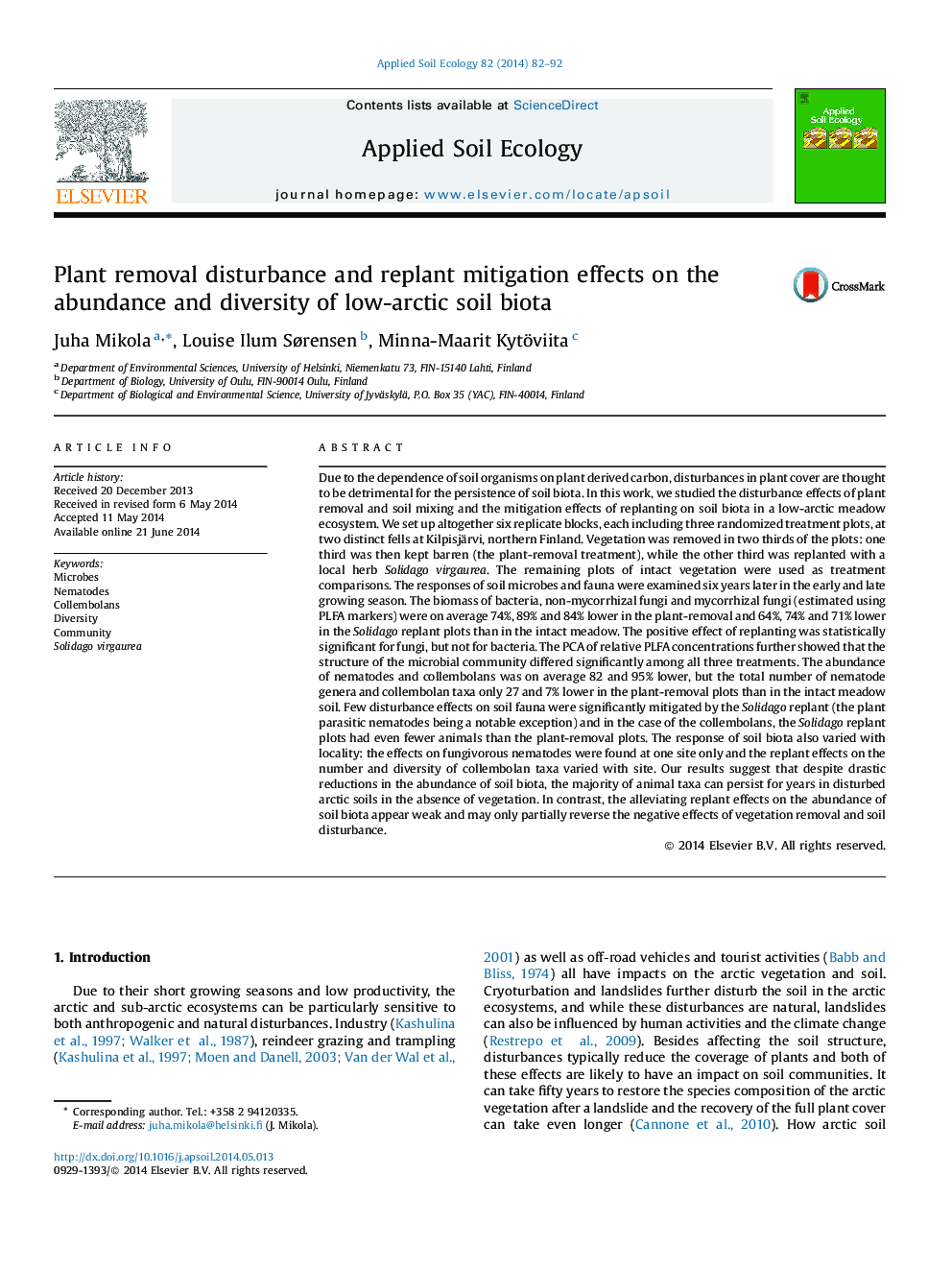| کد مقاله | کد نشریه | سال انتشار | مقاله انگلیسی | نسخه تمام متن |
|---|---|---|---|---|
| 4382154 | 1617801 | 2014 | 11 صفحه PDF | دانلود رایگان |
• We test how plant removal disturbance and replanting affect low-arctic soil communities.
• Plant removal reduces the abundance of soil organisms severely.
• Majority of soil animal taxa can, however, persist in the absence of plant cover for years.
• Replanting can mitigate plant removal effects for few groups of soil organisms only.
• The soil community response to a disturbance can vary with locality.
Due to the dependence of soil organisms on plant derived carbon, disturbances in plant cover are thought to be detrimental for the persistence of soil biota. In this work, we studied the disturbance effects of plant removal and soil mixing and the mitigation effects of replanting on soil biota in a low-arctic meadow ecosystem. We set up altogether six replicate blocks, each including three randomized treatment plots, at two distinct fells at Kilpisjärvi, northern Finland. Vegetation was removed in two thirds of the plots: one third was then kept barren (the plant-removal treatment), while the other third was replanted with a local herb Solidago virgaurea. The remaining plots of intact vegetation were used as treatment comparisons. The responses of soil microbes and fauna were examined six years later in the early and late growing season. The biomass of bacteria, non-mycorrhizal fungi and mycorrhizal fungi (estimated using PLFA markers) were on average 74%, 89% and 84% lower in the plant-removal and 64%, 74% and 71% lower in the Solidago replant plots than in the intact meadow. The positive effect of replanting was statistically significant for fungi, but not for bacteria. The PCA of relative PLFA concentrations further showed that the structure of the microbial community differed significantly among all three treatments. The abundance of nematodes and collembolans was on average 82 and 95% lower, but the total number of nematode genera and collembolan taxa only 27 and 7% lower in the plant-removal plots than in the intact meadow soil. Few disturbance effects on soil fauna were significantly mitigated by the Solidago replant (the plant parasitic nematodes being a notable exception) and in the case of the collembolans, the Solidago replant plots had even fewer animals than the plant-removal plots. The response of soil biota also varied with locality: the effects on fungivorous nematodes were found at one site only and the replant effects on the number and diversity of collembolan taxa varied with site. Our results suggest that despite drastic reductions in the abundance of soil biota, the majority of animal taxa can persist for years in disturbed arctic soils in the absence of vegetation. In contrast, the alleviating replant effects on the abundance of soil biota appear weak and may only partially reverse the negative effects of vegetation removal and soil disturbance.
Journal: Applied Soil Ecology - Volume 82, October 2014, Pages 82–92
